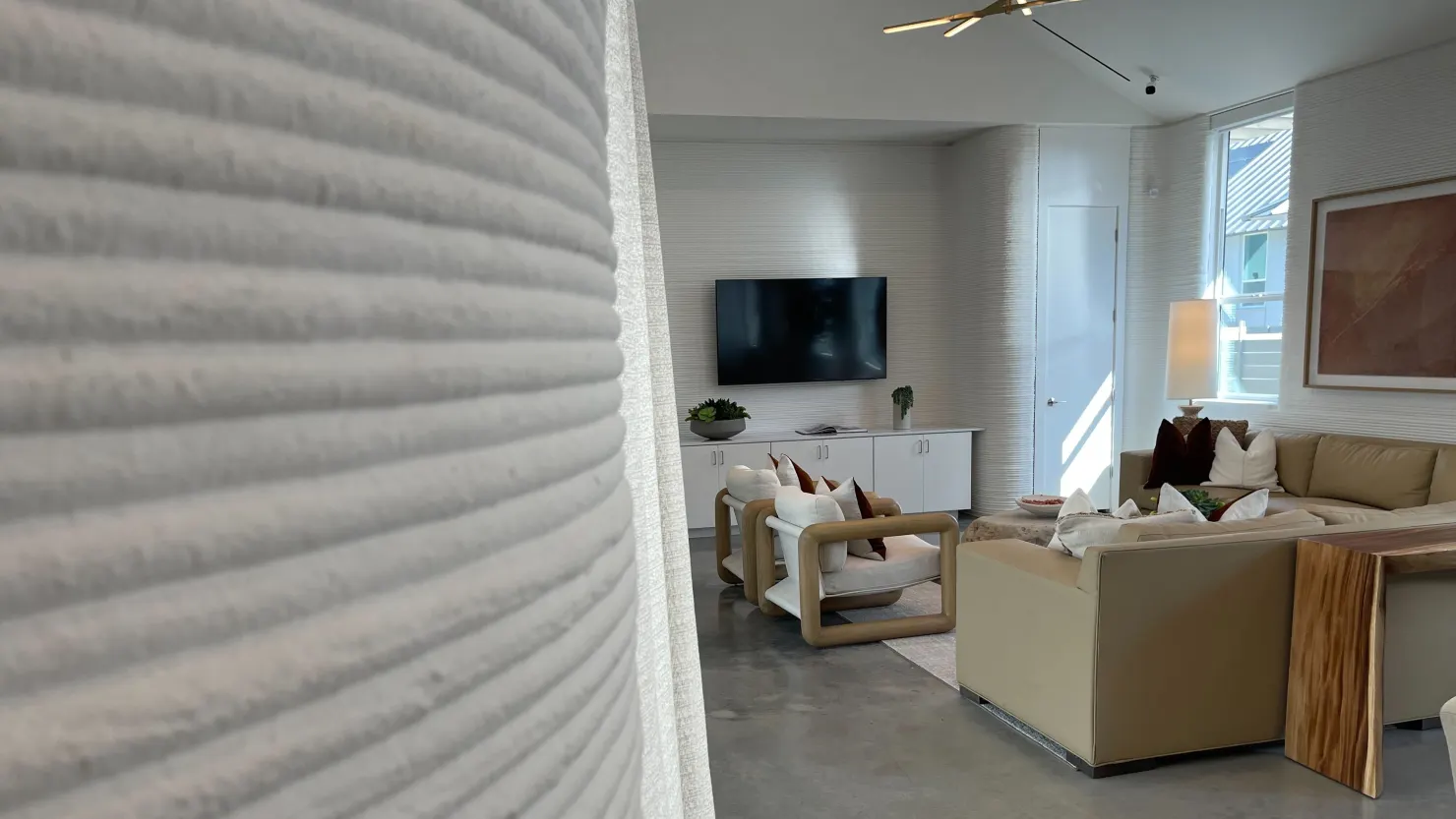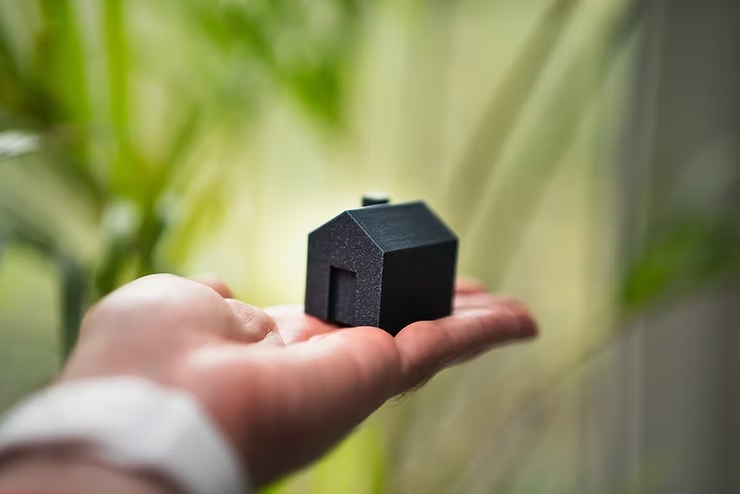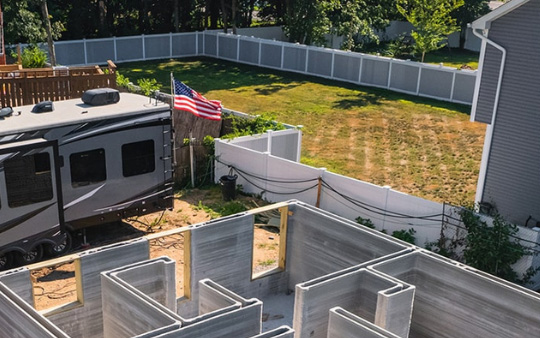3D HOUSE PRINTING
The Company recently announced an expansion of its green industrial business segment, which currently has been focused on the environmental uses of hemp for construction and hemp for sustainable bio-energy sources. To achieve this, the Company has entered into a Commercialization Agreement with the developer of a next generation 3D house printing technology. Compared to existing 3D house printing systems, this new technology will be considerably less costly to develop, lighter, easier to transport from location to location, simpler and quicker to set up and take down, and does not require a level setting to operate.
The benefits of 3D printed houses are numerous and align with the Company’s strategic direction. In most cases 3D printed houses can be constructed more quickly, with fewer resources, which reduces construction costs and makes homes more affordable. Additionally, this technology offers greater customization and design flexibility, as 3D printers can create complex shapes and curves that are challenging to achieve with traditional methods. Furthermore, 3D printed houses can be built using more sustainable and environmentally friendly materials, which helps minimize the environmental impact of construction. Although 3D printed houses is a relatively new technology, it is gaining significant traction in recent years as the technology becomes more advanced and cost-effective. As demand for affordable, sustainable, and customizable housing continues to rise, 3D-printed houses are likely to become a more popular choice for home construction. A recent media segment highlighted a 100-house community in Texas that was constructed using a 3D house printer, which showcased the potential of this technology in large-scale developments. Also, according to a recent report from Global Information Inc., the 3D printed homes market “is poised to grow from US$9.93 million in 2024 to approximately US$2.9 billion by 2032, growing at a CAGR of 62.4% during the forecast period”, demonstrating a growing acceptance of this new technology.
Initial discussions with a number of large residential home builders have met with a favourable response. At this time, for competitive advantage reasons, the Company must limit the public information presented on this project until after certain commitments are fulfilled. The Company will provide further information about the project upon completion of these commitments.
The Company recently announced an expansion of its green industrial business segment, which currently has been focused on the environmental uses of hemp for construction and hemp for sustainable bio-energy sources. To achieve this, the Company has entered into a Commercialization Agreement with the developer of a next generation 3D house printing technology. Compared to existing 3D house printing systems, this new technology will be considerably less costly to develop, lighter, easier to transport from location to location, simpler and quicker to set up and take down, and does not require a level setting to operate.
The benefits of 3D printed houses are numerous and align with the Company’s strategic direction. In most cases 3D printed houses can be constructed more quickly, with fewer resources, which reduces construction costs and makes homes more affordable. Additionally, this technology offers greater customization and design flexibility, as 3D printers can create complex shapes and curves that are challenging to achieve with traditional methods. Furthermore, 3D printed houses can be built using more sustainable and environmentally friendly materials, which helps minimize the environmental impact of construction.
Although 3D printed houses is a relatively new technology, it is gaining significant traction in recent years as the technology becomes more advanced and cost-effective. As demand for affordable, sustainable, and customizable housing continues to rise, 3D-printed houses are likely to become a more popular choice for home construction. <a href=”#”>A recent media segment highlighted a 100-house community in Texas that was constructed using a 3D house printer, which showcased the potential of this technology in large-scale developments.</a> Also, according to a recent report from Global Information Inc., the 3D printed homes market “is poised to grow from US$9.93 million in 2024 to approximately US$2.9 billion by 2032, growing at a CAGR of 62.4% during the forecast period”, demonstrating a growing acceptance of this new technology.
Initial discussions with a number of large residential home builders have met with a favourable response. At this time, for competitive advantage reasons, the Company must limit the public information presented on this project until after certain commitments are fulfilled. The Company will provide further information about the project upon completion of these commitments.
In addition to the developer’s research on the use of hemp fibre in the mixture for the printer, GHG’s R&D Division will begin research on a number of different forms of environmentally friendly cement that could be utilized in 3D house printers. Prof. Victor Castaño, the head of the R&D Division, has assembled a team of Ph.D. candidates to assist him in this research endeavour.
3D HOUSE PRINTING IN THE NEWS

CNBC – “Take a look inside the world’s largest 3D printed housing development”
Features the world’s largest 3D printed community, highlighting its homes and resident experiences.
https://www.cnbc.com/2025/03/12/inside-the-worlds-largest-3d- printed-housing-development.html

AP News – “3D printed and factory-built homes could help tackle housing crisis”
Discusses how 3D printed and factory-built homes are being considered as solutions to the U.S. affordable housing crisis.

Authentise – “The Current Status and Future Hopes of 3D Printed Homes: A 2025 Update”
Explores the current state and future prospects of 3D printed homes, focusing on sustainability and innovation.

SQ4D – “10 Benefits of 3D Printed Homes Over Traditional Construction”
Although not exclusively a 2025 article, it provides relevant insights into the benefits of 3D printed homes, which are applicable in 2025. Lists the advantages of 3D printed homes, including cost efficiency, speed, design flexibility, and sustainability.

Alaska.edu – “Did You Know 3D Printing is Shaping the Future of Housing in Alaska?”
Although published in 2024, it mentions a project happening in 2025. Highlights a 2025 project in Alaska where a 1,200-square- foot home will be 3D printed to withstand extreme weather conditions.
https://www.alaska.edu/news/did-you-know/2024-did-you-know-3D-printing-Alaska-housing.php
